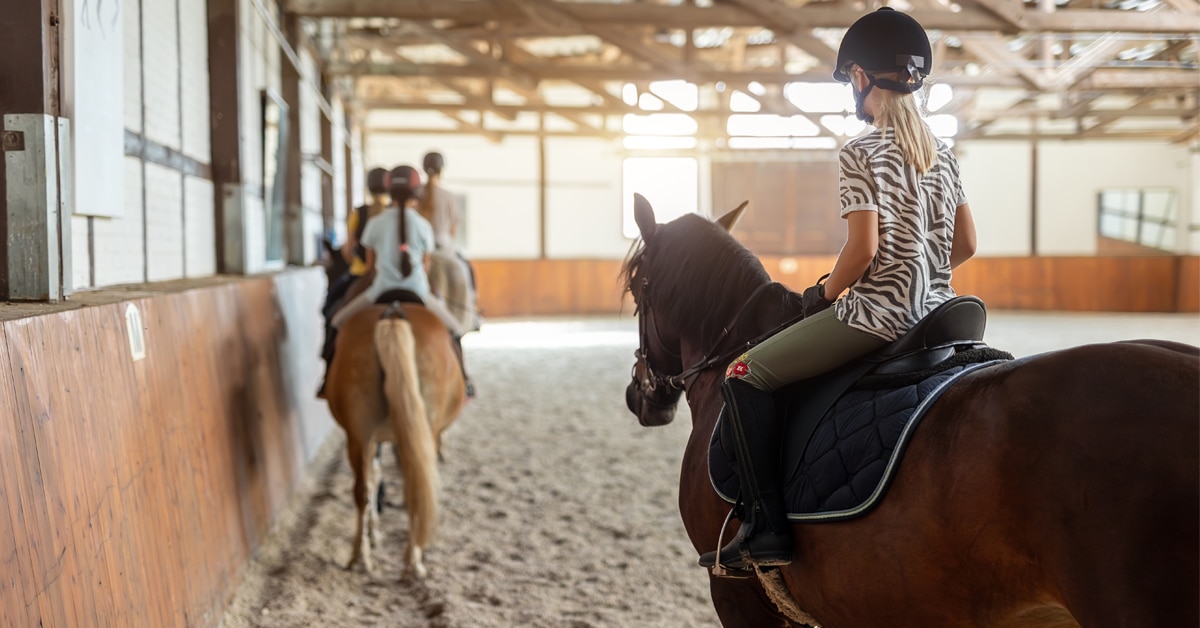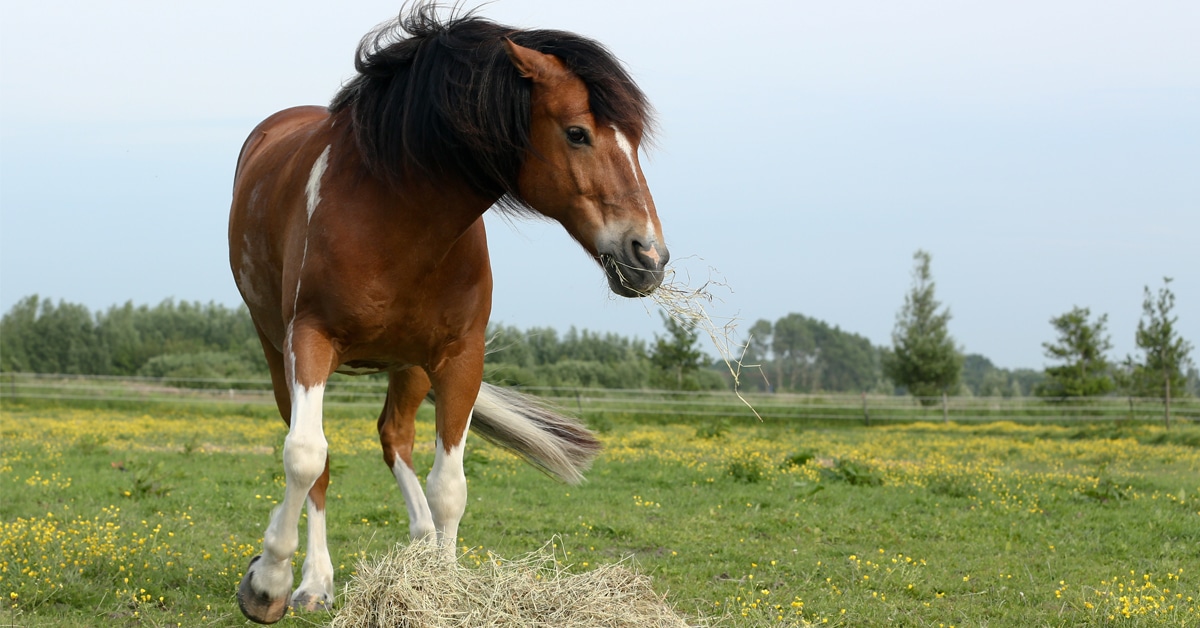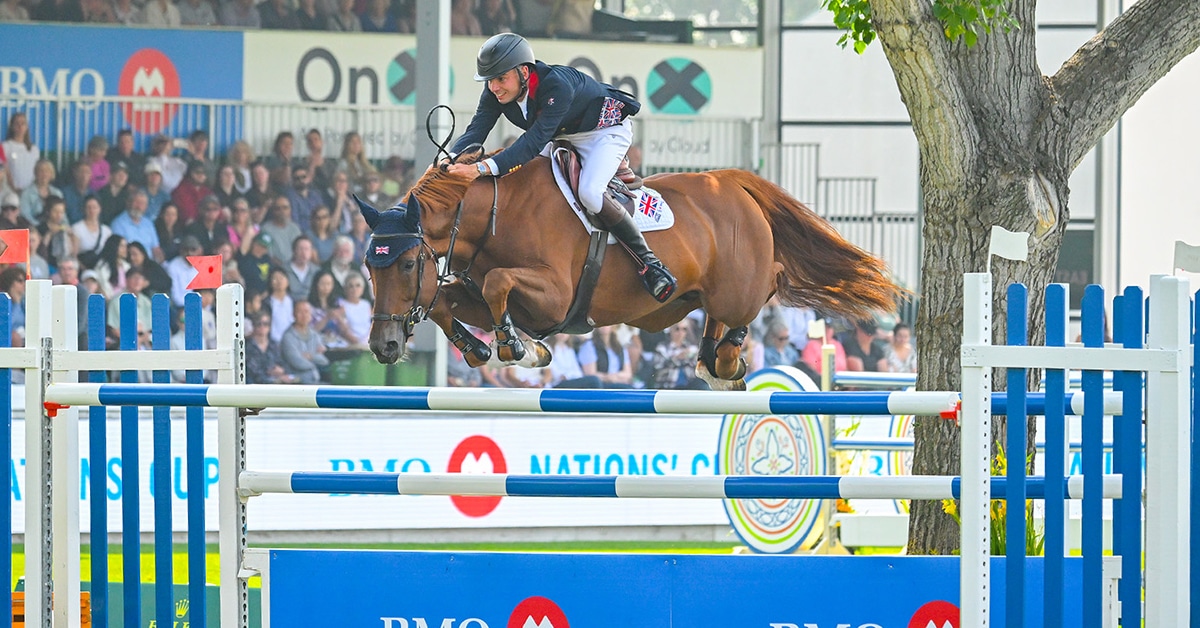Exertional rhabdomyolysis (ER) is the most accurate name for the condition that causes the dissolution (breakdown) of muscle cells following exercise. Known as “rhabdo” for short, it can affect humans as well as horses and can happen during or immediately following exercise.
In a typical ER incident, you are exercising your horse, perhaps after a period of rest, or possibly introducing him to a more intense level of work. Suddenly, his gait becomes shorter, his movements stiff. He may even stop moving altogether and appear to be in pain. You may notice trembling or cramping muscles, especially in the hindquarters and back. He’s sweating profusely and his respiration and pulse rate are markedly elevated. The front limbs may also be affected, and severe cases may present as colic, with the horse acting agitated and stretching out. Muscle pain and cramping can last for hours, even if the horse is returned to his stall to rest.
Why does this happen? To build muscle, we have to create tiny micro tears in the fibres, which leads to growth of new muscle. You have likely felt this yourself for a few days following an intense workout. Initial diagnosis of an ER episode in horses is based on clinical signs and muscle damage in the back and rump as they spasm and contract, causing cells to leak creatine kinase (CK) and aspartate transaminase (AST), a pair of enzymes that can be measured in the blood when muscle cells break down. The peak level of CK will be about four to six hours after the ER episode, while AST increases slowly and can stay elevated for up to seven to 10 days. A vitamin E deficiency has also been linked to sporadic ER.
As the body tries to filter out the by-products of muscle cell breakdown, in extremely severe cases the horse’s urine will be a dark, reddish-brown colour, indicating the kidneys are strained or even damaged.
While ER will (hopefully) be a one-time occurrence, some horses are predisposed to multiple events, known as recurrent exertional rhabdomyolysis (RER). Research indicates an abnormality in intracellular calcium regulation is the possible cause. While there is no diagnostic test for RER, it can be identified by observing repeated episodes of tying-up in fit horses on a well-balanced diet and reasonable training program, elevations in serum CK with exercise, and nuclei in muscle fibre biopsies not showing abnormal polysaccharide (glycogen). Some horses with RER will tie up just by becoming overly excited.
Genetics can also play a role. Research at Michigan State University’s College of Veterinary Medicine has indicated that RER is more common in certain breeds such as Quarter horses, Standardbreds, Thoroughbreds, Warmbloods, and Arabians. Be aware, however, that there is no known gene responsible for the disease and some companies that offer the service have no scientific evidence to validate what they are testing for. Instead, arrange for any testing through your veterinarian to ensure the most accurate results.
What to do during an episode of exertional rhabdomyolysis
- Stop exercising immediately – continuing to work the horse will increase his pain and damage to the muscles. Ship him back to the barn if necessary.
- Call your veterinarian – he or she will make the horse more comfortable with tranquilizers and pain meds, treat dehydration if necessary, and take blood samples for testing to determine the amount of muscle and/or kidney damage.
- Your vet will prescribe a plan to ensure the horse rests and heals before gradually increasing exercise. The horse should be rested completely for 12 to 48 hours until all signs of stiffness resolve, after which hand-walking or turnout in a small paddock will be advised.
How to manage the horse that ties up
Avoiding stressful triggers is important, so:
- make sure the horse is stalled in a quiet area of the barn
- if the horse frets when his buddies leave the barn for schooling etc., try riding the horse first instead of later
- make sure the horse gets plenty of turn-out
- avoid situations where the horse gets excited and you have to hold him back, such as galloping on hacks with other horses
- provide plenty of fresh water indoors and out to avoid dehydration
- avoid stall rest if possible
- provide calm exercise if the horse has had a day off
- if necessary, give medications that affect intracellular calcium regulation one hour before exercise (ask your vet)
- never push the horse beyond its conditioning level by exercising too hard or too fast, or when the weather is very hot and humid
- if the horse is suffering from a respiratory infection or has a cough, nasal discharge, etc., refrain from exercising it until the symptoms disappear.
Feeding a horse that ties up
Studies at Kentucky Equine Research indicate that horses with RER do best on a diet that includes:
Forage: A high-quality grass or oat hay should form the basis of the diet. If alfalfa hay must be fed, a half-alfalfa, half-oat hay mix may be the best option.
Vitamin and mineral supplements containing Vitamin E and selenium; however, some feeds contain enough selenium and other vitamins and minerals so additional supplements are not necessary.
Complete Feeds: do not require additional protein/vitamin/mineral supplements or grain and are to be fed along with hay. The starch/sugar content of the feed should not be greater than 15-20% by weight and the fat should be greater than 10% by weight.
Electrolyte balance: Ensure that salt is always available, either as a salt block or by adding 1-3 tbsp of loose iodized table salt in the feed. If the horse is sweating a great deal, an additional tsp of lite salt (containing potassium chloride) can be added. (Please consult your local equine nutritionist or nutrition company for feeding advice.)
It is estimated that about 70% of horses with chronic ER can lead normal lives and even be competitive, but judicious, observant and proactive management is key.
The Latest










